Let’s investigate Do Motherboards Come With Thermal Paste? Building a computer requires numerous components. Thermal paste, which helps the CPU and heatsink dissipate heat, is often disregarded. Unsurprisingly, most motherboards arrive without thermal paste, so users must apply it.
Due to the variety of aftermarket cooling options, motherboards usually come with something other than thermal paste. Coolers need varying types and amounts of thermal paste.
Without pre-applied thermal paste, manufacturers let customers choose the best cooling method. This optimizes performance and prevents compatibility concerns. Remember thermal paste to ensure heat transfer and minimize overheating when assembling a computer.
Do Motherboards Come With Thermal Paste?
Usually, motherboards don’t have a thermal paste. Users must apply thermal paste during installation, which is offered separately. It is required to optimize CPU-cooler heat transmission.
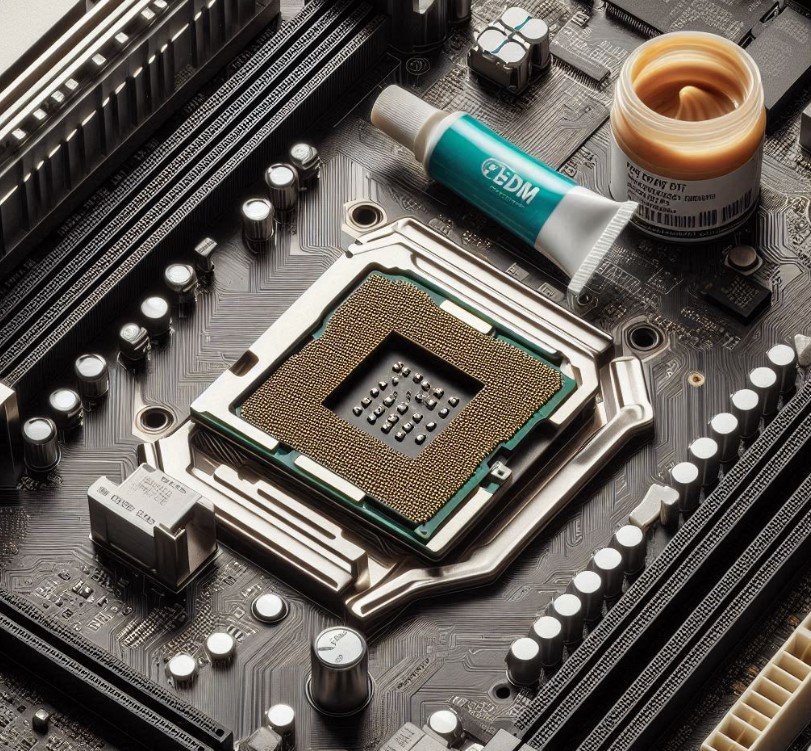
What Is Thermal Paste?
A chemical compound that is thermally conductive but typically not electrically conductive, thermal paste—also known as thermal compound, thermal grease, thermal interface material (TIM), thermal gel, heat paste, heat sink compound, or CPU grease—is frequently used as an interface between heat sinks and heat sources like high-power semiconductor devices.
To optimize heat transfer and dissipation, thermal paste’s primary function is to remove air gaps or spaces—which serve as thermal insulation—from the contact area. It is possible to use thermal paste at the thermal contact.
Thermal paste does not strengthen the mechanical contact between the heat source and heat sink like thermal adhesive. To apply pressure, spread, and thin the thermal paste, it must be used in conjunction with a fastener, such as screws, to hold the heat sink in place.
How Does Thermal Paste Work On Motherboard?
This post is entirely all about how does thermal paste work on computer components? CPU thermal paste is typically used as a bridge between a heatsink and a heat slug, like the one on top of the CPU. The paste is meant to help heat move from one area to the other. It is merely an interface; it doesn’t actively cool anything.
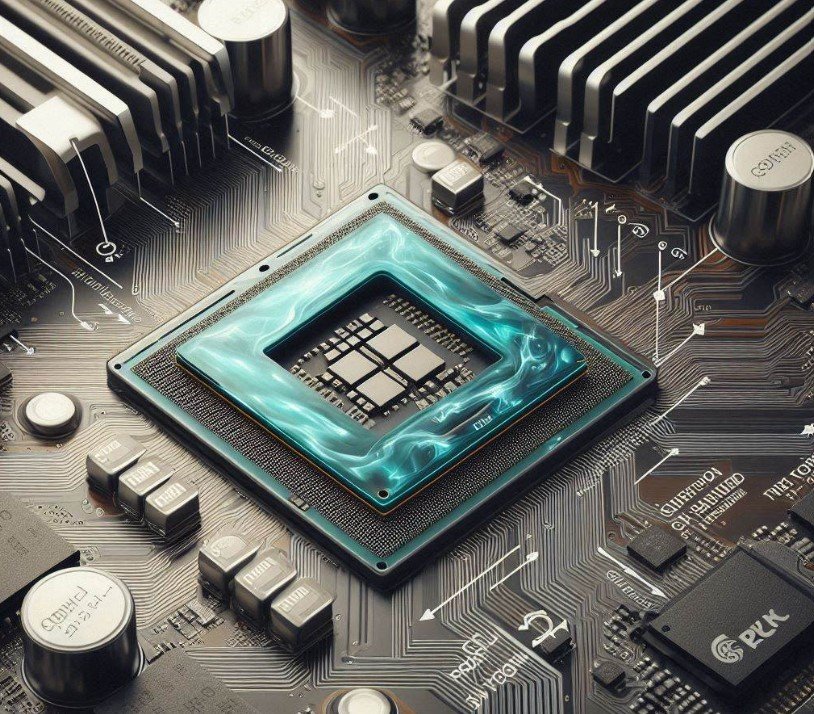
The viscosity of thermal paste poses a risk. It does melt when heated. When employed correctly, the tiny amount of paste does not readily flow and seeps into the CPU socket between a heat source (the CPU heat slug) and the heatsink.
The melting paste would seep past the motherboard chipset and into the motherboard if put into the chipset without protection. Short circuits in the motherboard could result from this contamination. Additionally, the flowing paste turns into an insulator when its viscosity decreases.
It would be challenging to clean since thermal paste has the potential to run into areas where it shouldn’t, such as the motherboard, pins, chipset mount, etc. The best thing to do would be to get a new processor.
Why We Need To Use Thermal Paste On Motherboard?
Although the CPU cooler’s metal base and the CPU’s IHS appear smooth to the unaided eye, these metal plates contain tiny flaws that may cause inadequate heat transfer.
Because of these irregularities, there are air spaces between the two surfaces, which thermal paste fills to facilitate a more effective heat transfer.
Thermal paste aids in the functioning of your CPU cooler, and a cooled CPU reduces the possibility of performance problems like throttling.
Where Do I Get Thermal Paste?
Your neighborhood computer store most likely has some. If you want to enhance your cooling performance, purchase from a reliable brand. Based on my experience, though, this shouldn’t be an issue. If not, ordering it online is always a good option.
How To Apply Thermal Paste On Motherboard?
Read this entire section before installing to know what to expect and prepare ahead.
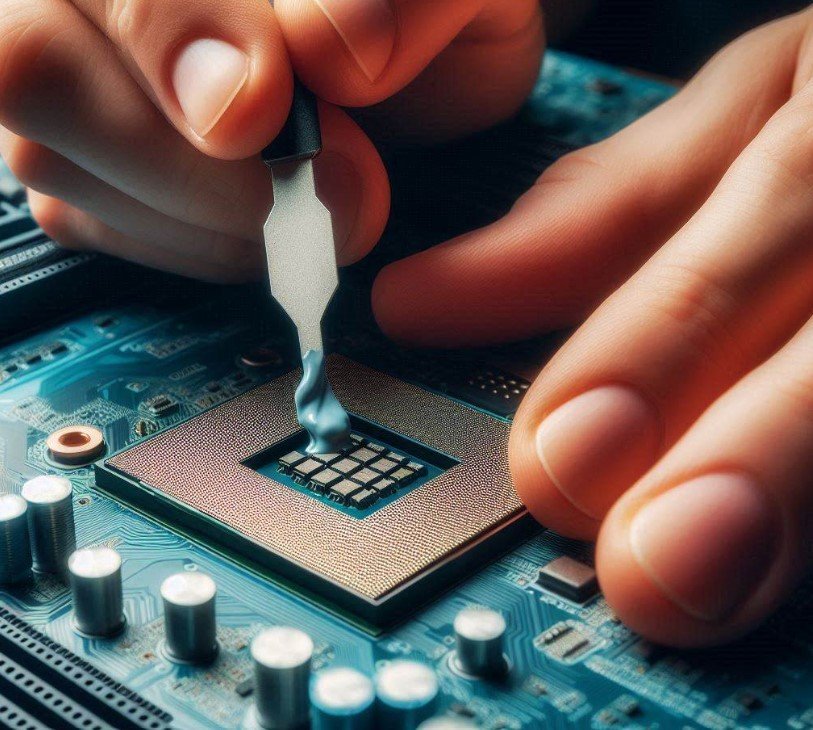
- Refer to all directions before starting. Thermal paste and CPU coolers are included. Knowing your thermal paste and CPU cooler’s characteristics before starting will make the process easier.
- Apply thermal paste to the CPU’s IHS center. This step is unnecessary if your cooler has thermal paste already applied. Put about the size of a grain of rice or a pea on the center of the built-in heat spreader.
- Install CPU cooler. Hold your cooler’s base plate or water block on the CPU while attaching it to the mounting mechanism with light, top-down pressure. It would help if you pressed hard enough to keep the cooler from moving and uniformly distribute thermal paste but not enough to bend the motherboard or damage the CPU. Secure the cooler to the motherboard diagonally with screws (if using a screw mechanism) to form an “X” with them. To ensure uniform pressure, attach all four screws and turn them a few times before tightening them.
- Double-check your work after attaching the CPU cooler base plate or water block. Thermal paste should not leak over the CPU edges or motherboard. If so, use alcohol to remove excess paste and start over. Congratulations if everything is clean and the cooler doesn’t move! You have finished this crucial step.
Does Motherboard Come With Pre-Applied Thermal Paste?
Thermal paste is not usually applied automatically to motherboards. The user must apply thermal paste, often provided separately when mounting a CPU and CPU cooler to the motherboard.
There isn’t any thermal paste integrated into the motherboard itself. Users must buy thermal paste and apply it manually when updating components or configuring a new computer.
Can Thermal Paste Damage The Motherboard?
Overflowing thermal paste can cause problems, mainly if it’s conductive and comes into contact with motherboard parts. Damage and short circuits may result. So, it’s very important to use the right amount, which is usually a drop about the size of a pea in the middle of the CPU.
How To Remove Thermal Paste From Motherboard?
Here is the solution of how to clean thermal paste off motherboard? It’s relatively simple to remove thermal paste from a CPU, and if you have the correct equipment and procedures, you can do it quickly and safely.
Use this method to remove old thermal paste without damaging your components, whether upgrading your CPU or just reapplying it. So, let’s start:
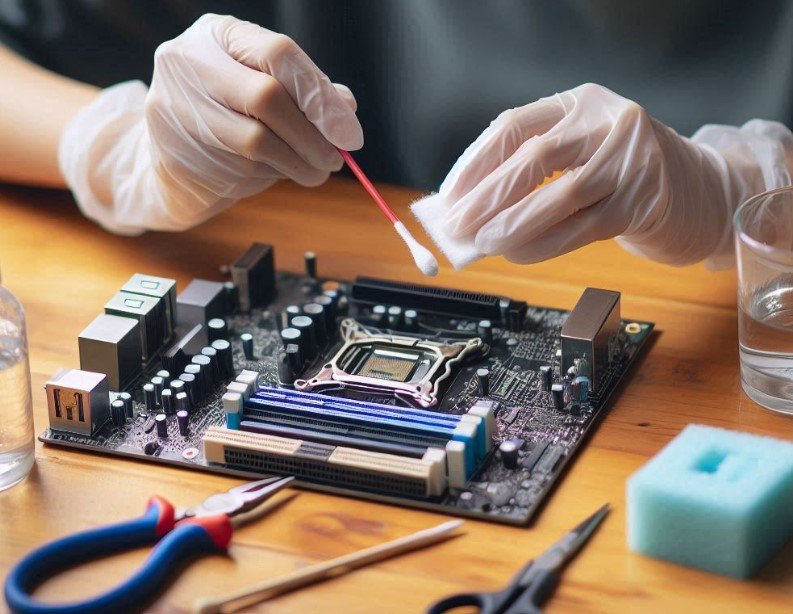
Step1: Unplug and turn off the power
Ensure you have disconnected all electrical connections from your computer and completely shut it down.
Step 2: Take Out the CPU Cooling Fan
Remove the CPU cooler from the motherboard with caution. The way you do this may be different based on the type of cooler you have. If in doubt, follow the manufacturer’s recommendations. After removing the cooler, the previous thermal paste will be visible on the CPU and cooler.
Step 3: Apply Isopropyl Alcohol
Use isopropyl alcohol to wet a lint-free cloth. The cloth only needs to be slightly damp—avoid soaking it.
Step 4: Clean the cooler and CPU
Use the cloth soaked in alcohol to gently wipe the cooler’s and CPU’s surfaces. Move in circular motions to raise and dissolve the residual thermal paste. Apply more isopropyl alcohol if any areas remain unclean, and keep wiping until the surfaces are spotless.
Step 5: Use cotton swabs for detail cleaning
Apply isopropyl alcohol-dipped cotton swabs to any difficult-to-reach places. This is very helpful for cleaning the CPU’s edges.
Step 6: Permit to Dry
Allow the cleaned surfaces to air dry for a few minutes. This should take little time because isopropyl alcohol evaporates quickly.
Step 7: Use Fresh Thermal Paste Again
Following the directions on your CPU cooler, you can reapply fresh thermal paste after everything has dried. A tiny, pea-sized quantity at the CPU’s center is usually adequate.
Step 8: Put the CPU cooler back on.
Ensure the freshly applied thermal paste makes good contact with the CPU cooler before carefully reattaching it. As the maker tells you to, secure it.
Step 9: Turn on and check
Re-plug and restart your PC’s power supply. Check the CPU temperatures to make sure the new thermal paste is operating efficiently.
What Happens If You Don’t Put Enough Thermal Paste On CPU?
Using too much or too little thermal paste is one of the most frequent blunders. If there is an excessive amount of paste, it may cause a mess around the borders of the CPU or obstruct the heatsink’s ability to make contact with the CPU.
Inadequate paste can lead to gaps and air bubbles, which raise the temperature and hinder heat transfer. Depending on the size and form of the CPU, the optimal amount of paste is roughly the size of a pea or a rice grain.
Is It Ok To Use PC Without Thermal Paste?
Playing video games on your PC without thermal paste is never advised, and using your computer without thermal paste is also not advised. Despite its seemingly insignificant appearance, thermal paste has a significant impact.
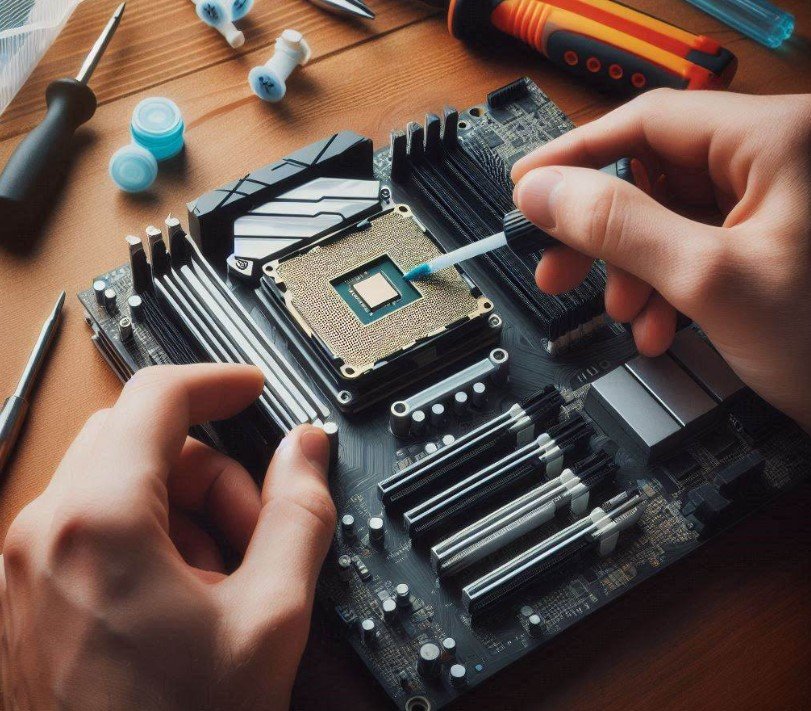
How Much Thermal Paste Should I Use?
It is dependent upon the paste. Contrary to widespread assumption, testing has shown that applying too much paste does not raise your temperature. However, using insufficient paste WILL. Mounting pressure causes all extra thermal paste to be forced outward. Overdoing the paste will result in a mess since thermal paste will leak onto the board from behind the cooler.
- Wasting thermal paste
- Making a mess
However, certain thermal pastes—particularly premium brands—are conductive due to the presence of metals or carbon. They could cause a short and damage your parts if they leak. Thus, conductivity should be checked. Two excellent examples of non-conductive thermal paste are Noctua NT-H1 and Arctic MX4.
Is It Bad If Thermal Paste Gets On Side Of CPU?
Yes, while installing a CPU cooler, it is usually acceptable if a tiny bit of thermal paste overflows or squeezes out from the edges. A surplus thermal paste is acceptable and expected since it creates good thermal contact between the CPU and the heatsink.
It is not a big deal as long as the overflow is small and doesn’t affect any other parts. For complete contact, there must be a uniform distribution of thermal paste between the CPU and heatsink. It is better to squeeze out some surplus paste than to have gaps or uneven coverage, which could result in subpar thermal performance.
On the other hand, excessive thermal paste overflow should be avoided as it may cause issues if it gets on different components. Applying enough thermal paste to the CPU and heatsink surfaces should produce a thin, even layer. A tiny bit of overflow during installation is typical and acceptable as long as it’s done carefully.
Do I Need New Thermal Paste When Replacing Motherboard?
Not at all. Thermal paste is just a way to get around the fact that two metals don’t have the same plate smoothness. During my many years in machining, mastering a height gauge frequently required us to stack precision gauge blocks.
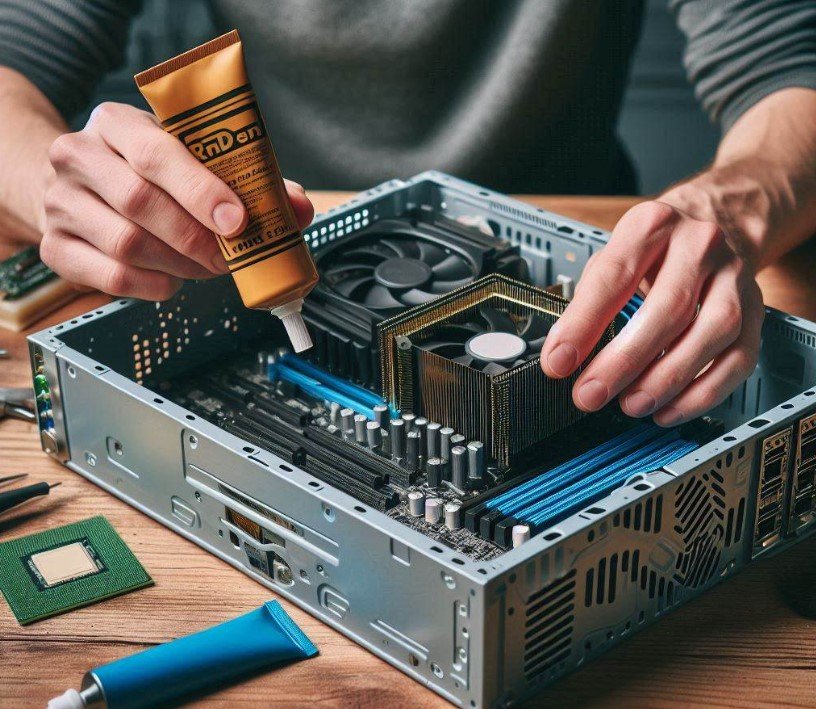
“Wringing” refers to stacking two or more gauge blocks together to obtain the necessary dimension; you slide the gauge blocks together until all air molecules are gone from between the surfaces. It’s a fantastic procedure. The two surfaces merge almost wholly.
The flatness of gauge blocks is machined and polished to a maximum variance of 1.25 nanometers, or approximately 0.000000 05. In actuality, the surfaces differ by 1 nm from peak to trough. The air molecules squeeze out.
And what you have left is a plate-based bar that is practically solid. This bar can be “broken,” but it’s pretty tough! Anyhow. You could “wring” the IHS and a solid copper heat sink together like gauge blocks without using thermal paste if you were to lap and polish them to “gauge block” specifications.
When Buying A CPU Does Thermal Paste Come With A Motherboard?
Every CPU cooler requires thermal paste, but many of them come already applied, making installation easier. Examine the bottom of the water block or base plate of the CPU cooler that connects to the CPU to see whether pre-applied paste exists. If it already exists, you won’t need to apply additional silver paste during installation.
Do Intel CPUs Come With Thermal Paste?
Since not every Intel CPU has a cooler, not every Intel CPU has a thermal paste. Like AMD, Intel exclusively includes coolers with particular processors and pre-applies thermal paste.
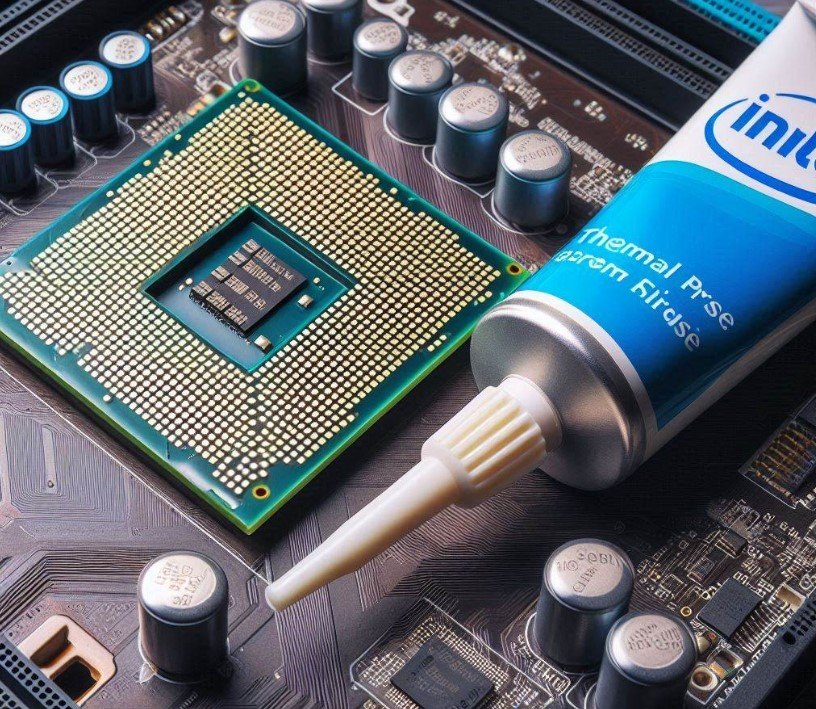
Coolers with CPUs that don’t need more robust solutions and have more thermal capacity will typically be found. Because they are given away for free and aren’t made for overclocking or enthusiast use, OEM-supplied CPU coolers from AMD and Intel are better than aftermarket coolers. It is possible, but be aware of a significant temperature increase.
Do I Need To Buy Thermal Compound Separately?
Yes, when building a PC, you must use thermal paste. A thermally conductive substance called thermal paste aids in moving heat from the CPU to the cooling solution or heatsink.
If thermal paste is not present to adequately disperse heat, the CPU may overheat and possibly sustain damage. When assembling a Computer, placing a tiny bit of thermal paste—about the size of a pea—between the CPU and heatsink is imperative.
Conclusion
A motherboard’s ability to properly dissipate heat depends on its thermal paste. Even though motherboards do not come with thermal paste, buying and using the appropriate one is imperative for the best possible thermal management.
To ensure optimal performance, consider selecting a thermal paste with high thermal conductivity, cleaning it, applying it appropriately, and changing it regularly. By using the right thermal paste, you can keep your motherboard and other parts in good shape and keep your CPU cool.
Frequently Asked Questions
Do CPUs Come With Thermal Paste?
Thermal paste is pre-applied to CPU coolers, so if your processor comes with a stock cooling, you can avoid buying one separately.
Is thermal paste like glue?
While glue and epoxy are solids, thermal grease, and paste are liquids that don’t stick as well. They penetrate textured surfaces to remove low-conductive regions and air spaces. They don’t always include glue, making it possible to remove the parts with little harm.
Can thermal paste damage a CPU?
Thermal paste is essential for keeping your CPU cool and practical. However, using it improperly can result in a number of issues and dangers, including overheating, decreased performance, and even hardware damage.






